AACR Takes Action Against the “Epidemic” of Youth E-cigarette Use
In the past year, the number of American teenagers using tobacco products has increased by nearly 40 percent, reversing a trend that public health officials worked relentlessly to achieve.
The primary culprit in the resurgence of smoking? E-cigarettes. Taking aim at this growing public health problem, the American Association for Cancer Research (AACR) held a congressional briefing on Wednesday, June 12, titled “E-cigarettes and Nicotine Addiction: A Potential Health Crisis for Youth and Young Adults.” The roster of speakers included leaders from government, research, and policy sectors.
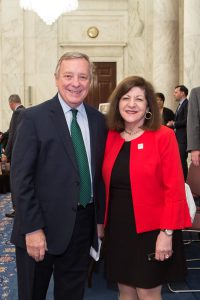
“Of the 600,000 cancer deaths in the United States each year, one-third of them are caused by tobacco,” said Margaret Foti, PhD, MD (hc), chief executive officer of the AACR. “The AACR’s members have worked tirelessly since 1907, when we were founded, to prevent the onset of cancer. We’re laser-focused on prevention and on behavioral interventions that are aimed at reducing the use of tobacco products.”
The briefing was sponsored by Sen. Dick Durbin (D-Illinois), a longtime advocate for tobacco control. He lambasted the e-cigarette manufacturers for creating products that many children and teens find appealing, showing the audience Jam Monster, Mango Bomb, and Lung Candy flavors.
“These companies know in their heart of hearts that if you are going to win converts to addiction, start early. Get the kids addicted,” he said. These products have been so heavily marketed and crafted to appeal to kids that it will take a massive effort from public and private sectors to reverse the trend, he said.
Senator Tim Kaine (D-Virginia) has joined with Senator Mitch McConnell (R-Kentucky) to sponsor the Tobacco-Free Youth Act, which would raise the age to purchase any tobacco product to 21. Presently, 14 states require people to be 21 to purchase tobacco products. The Tobacco-Free Youth Act would require the remaining 36 states to increase the purchase age to 21 or risk losing federal funding for substance abuse programs.
Kaine told the crowd that preventing youth from tobacco is so important that it enticed him and McConnell to work across party lines to draft the legislation.
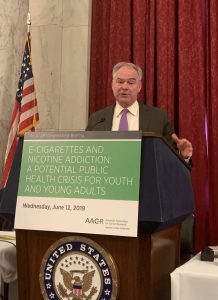
“We could do something very powerful and strong for the health of the country,” if age limit legislation is enacted, Kaine said.
As chairman of the AACR’s Tobacco Products and Cancer Subcommittee, Roy S. Herbst, MD, PhD, has been a powerful voice for restricting access to minors. At the briefing, Herbst, who is also the chief of Medical Oncology at Yale Cancer Center, talked about the delicate balance between keeping e-cigarettes away from youth and understanding that some adults use them to help quit smoking combustible products.
While more research is necessary to fully understand the effects on health, “It is crystal clear that these products have no place in the hands of children, teenagers, or young adults,” Herbst said.
Mitch Zeller, JD, director of the U.S. Food and Drug Administration (FDA) Center for Tobacco Products, described the FDA’s mission: “to protect the public and create a healthier future for Americans.” As such, the organization is closely focused on stopping U.S. youth from using e-cigarettes, he said.
As Zeller shared in a recent post on Cancer Research Catalyst, the AACR’s blog, there was a 78 percent increase between 2017 and 2018 in e-cigarette use among high school students and a 48 percent increase among middle school students.
“These alarming numbers have prompted the FDA to consider all policy options for stemming the tide,” he said Wednesday. One of the keystones of the FDA’s efforts is the Youth Tobacco Prevention Plan, a regulatory road map that encompasses prevention of access, curbs on marketing, and educating youth, parents, and retailers.
Brian A. King, PhD, MPH, deputy director of research translation from the Office on Smoking and Health at the Centers for Disease Control and Prevention, said the effort against e-cigarettes should be based upon scientific evidence, including strategies that worked to reduce rates of smoking combustible cigarettes.
“We have a half-century of science showing us what works in smoking cessation,” he said. “Increasing the price; warning the public of the risks; restricting youth access; and prohibiting flavors are all effective measures” that can also be employed to curb e-cigarette use in children and teenagers.
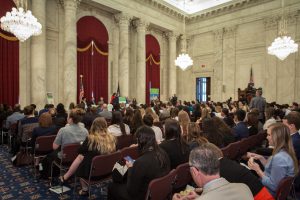
Rachel Grana Mayne, PhD, MPH, program director at the Tobacco Control Research Branch of the National Cancer Institute, discussed a major misconception held by many teenagers: the belief that e-cigarettes are not as dangerous as combustible tobacco products.
“In fact, that is one reason they are using the products,” she said. However, she said some damaging effects are already known, and further research is necessary to fully understand the short-term and long-term harms of e-cigarettes.
In the meantime, she said, “There’s an expanded group of kids who are at risk of a lifetime of addiction to nicotine products.”
Suchitra Krishnan-Sarin, PhD, a professor of Psychiatry at Yale School of Medicine, discussed numerous ways e-cigarettes have taken hold in schools, such as the quirky flavor names that stimulate interest and the subtle product design that allows students to hide the devices. “In many U.S. schools, e-cigarettes are named as one of the most significant problems,” she said. She said more cessation programs should be developed to help youth stop using e-cigarettes.
Providing a window into the actual experience of American youth, Michael Reles, vice chair of the Advisory Commission on Youth, Loudoun County, Virginia, joined the panel. He said vaping is a significant issue among local youth, and concurred with the panelists who noted that teens often perceive vaping as less dangerous than smoking combustible cigarettes.
The AACR is grateful to the panelists who participated in the congressional briefing, and will continue to support policies that will keep e-cigarettes away from young people. As Foti noted, “Together, we must do all we can to ensure that our youth are not becoming addicted to nicotine through these new products.”
Editor’s note: The congressional briefing came just before a pivotal anniversary in the fight against tobacco. This weekend marks the 10th anniversary of the Family Smoking Prevention and Tobacco Control Act, which gave the FDA authority to oversee all tobacco products. The AACR has been proud to work alongside the FDA to develop and support policies that prevent Americans from smoking, and we look forward to continuing this effort in the evolving effort to stop young people from using e-cigarettes. The entire briefing is available for viewing.

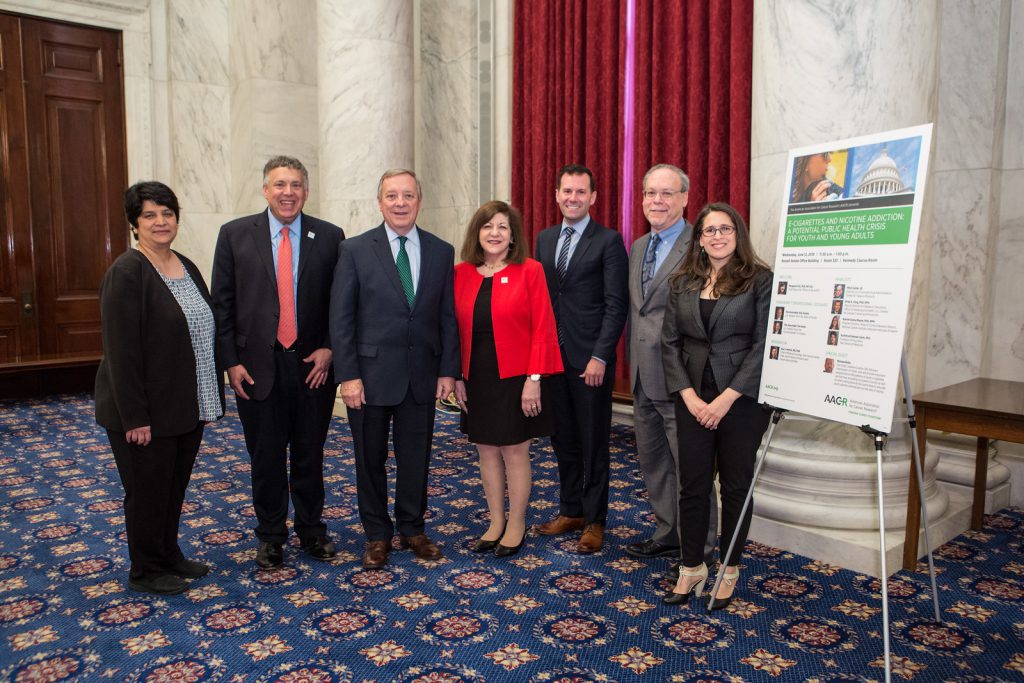

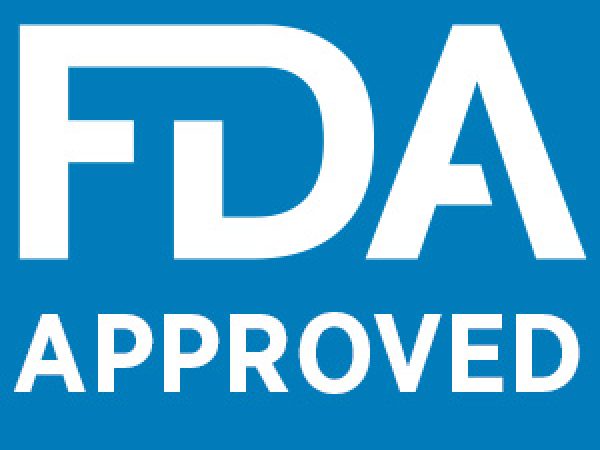

Thanks for sharing this great article
Very helpful and very useful